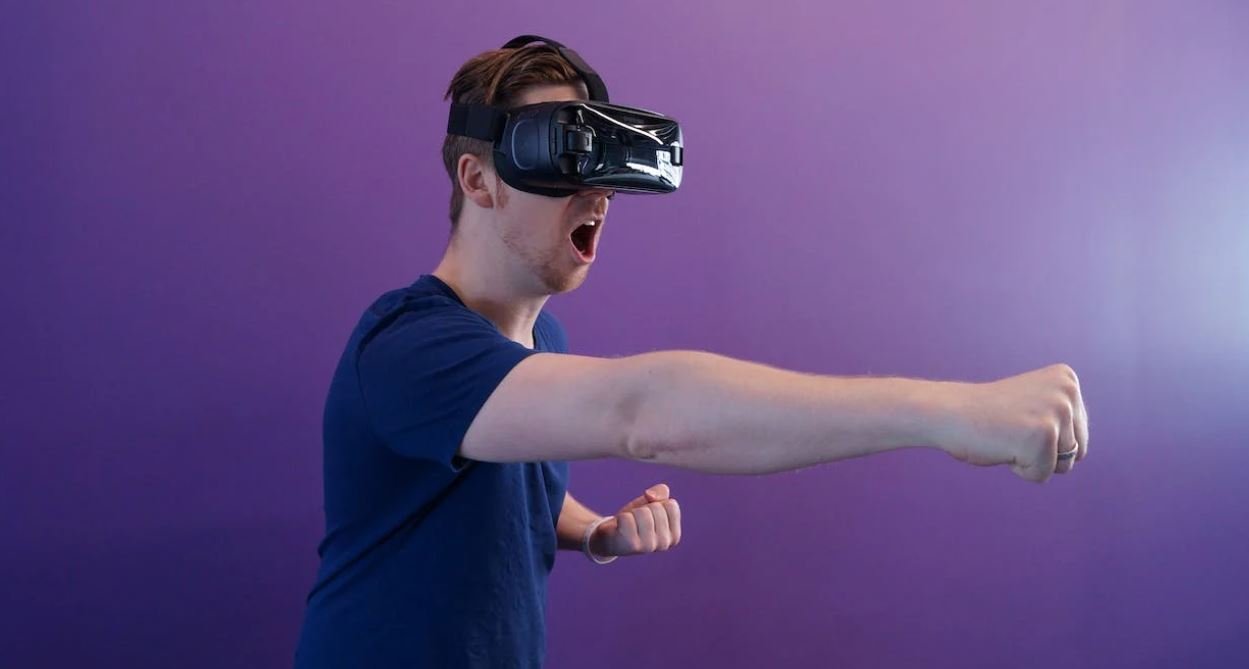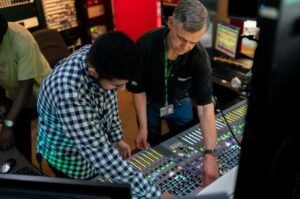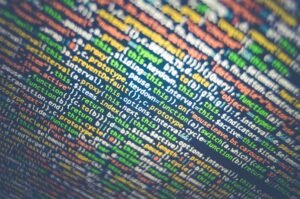Introduction:
The rise of AI technology has brought about significant advancements in various industries, and the media industry is no exception. AI media tools are transforming the way we create, edit, and distribute content. From automated transcription services to video editing software, these tools are saving time and improving efficiency for content creators. Let’s explore the key benefits and features of AI media tools in this article.
Key Takeaways:
– AI media tools are revolutionizing the content creation process.
– These tools offer automated transcription services, video editing software, and more.
– They save time and improve efficiency for content creators.
– AI media tools help enhance the quality and accuracy of content.
– They offer real-time insights and data analysis to optimize content performance.
Automated Transcription Services:
One of the key features of AI media tools is their automated transcription service. **These tools use advanced speech recognition algorithms** to convert spoken language into written text. Content creators no longer have to spend hours manually transcribing their recordings, as AI can now do it in a fraction of the time. *This enables content creators to focus on more creative aspects of their work.* Some popular AI transcription services include IBM Watson Speech to Text, Google Cloud Speech-to-Text, and Amazon Transcribe.
Video Editing Software:
AI media tools also offer advanced video editing capabilities. **These tools utilize machine learning algorithms** to analyze and understand video content. This allows them to automate various aspects of the editing process, such as trimming, color correction, and visual effects. *With AI video editing software, content creators can save time and streamline their workflow.* Some noteworthy AI video editing tools include Adobe Premiere Pro, Lumen5, and Magisto.
Real-time Insights and Data Analysis:
AI media tools not only assist in content creation but also provide valuable insights and analysis. These tools can monitor social media trends, analyze audience engagement, and provide recommendations to improve content performance. *With AI-powered data analysis, content creators can make data-driven decisions and optimize their content strategy.* They can identify the preferences of their target audience, understand what works best, and adapt their approach accordingly. This ultimately leads to better engagement and increased reach.
Table 1: Comparison of Popular AI Transcription Services
| Transcription Service | Cost per minute | Language Support | Accuracy |
|———————-|—————–|—————–|———-|
| IBM Watson | $0.02 | Multiple | High |
| Google Cloud | $0.025 | Multiple | Medium |
| Amazon Transcribe | $0.004 | Multiple | Low |
Table 2: Key Features of AI Video Editing Tools
| Video Editing Tool | Price | Key Features |
|——————–|————-|——————————————————————|
| Adobe Premiere Pro | Subscription | Automated editing, color grading, visual effects, motion tracking |
| Lumen5 | Free/Paid | AI-driven video creation, text-to-video conversion |
| Magisto | Free/Paid | AI-powered editing, smart video creation, customizable templates |
Table 3: Benefits of AI Media Tools
– Improved efficiency in content creation.
– Enhanced quality and accuracy of content.
– Real-time insights and data analysis.
– Time-saving automated transcription services.
– Streamlined video editing process.
In conclusion, AI media tools have revolutionized the way we create and distribute content. These tools provide automated transcription services, advanced video editing software, and real-time insights to content creators. By utilizing AI technology, creators can save time, enhance content quality, and optimize their strategies based on data-driven analysis. As the AI technology continues to evolve, we can expect further advancements in the world of media production and marketing.

Common Misconceptions
Misconception 1: AI media tools are capable of fully replacing human creativity
One common misconception is that AI media tools have the ability to entirely replace the creativity and skills of human creators. However, while AI can assist in creative processes and help automate certain tasks, it is not yet capable of replicating the complexity and depth of human creativity.
- AI tools can provide suggestions and recommendations, but the final decision is still up to the human creator.
- Human creativity involves emotions, intuition, and personal experiences, which AI currently lacks.
- AI tools are designed to enhance human creativity, not replace it entirely.
Misconception 2: AI media tools are foolproof and always produce accurate results
Another misconception is that AI media tools are infallible and always produce accurate and reliable results. Although AI algorithms have become increasingly sophisticated, they are not immune to errors and biases.
- AI tools heavily rely on the data they are trained on, and if the data is biased or limited, the results may also be biased or flawed.
- AI can make mistakes when interpreting ambiguous or complex concepts, leading to inaccurate results.
- Human oversight and evaluation are crucial when using AI media tools to ensure the accuracy of the outcomes.
Misconception 3: AI media tools will lead to job losses in the creative industry
Some people believe that the rise of AI media tools will result in job losses in the creative industry. While AI can automate certain tasks, it is more likely to transform than eliminate jobs.
- AI media tools can handle repetitive or time-consuming tasks, allowing creators to focus on higher-level creative activities.
- New jobs will emerge as AI continues to develop, such as AI specialists, data analysts, and trainers of AI algorithms.
- AI tools can enhance the creative process, leading to new opportunities rather than displacing human creators.
Misconception 4: AI media tools can perfectly replicate the art styles of famous artists
One misconception is that AI media tools can perfectly replicate the art styles of famous artists. While AI algorithms can mimic certain elements of an artist’s style, true replication is challenging.
- Artistic style involves complex nuances and personal expression that cannot be replicated through algorithms alone.
- AI tools can generate art in a similar style, but it lacks the originality and uniqueness that comes from the human artist.
- AI-generated art may lack the deep meaning, emotions, and cultural context that human-created art often possesses.
Misconception 5: AI media tools can completely automate the creative process
Lastly, there is a misconception that AI media tools can fully automate the creative process, eliminating the need for human involvement. However, the creative process involves more than just generating ideas or content.
- AI can assist in idea generation and content creation, but choosing the most relevant and meaningful ideas still requires human judgment.
- The creative process often involves collaboration, iteration, and refining ideas, aspects that AI may not fully comprehend.
- The human element is essential in infusing emotions, context, and originality into the final outcome of a creative project.

AI Media Tools Make the Table VERY INTERESTING to Read
Introduction: In the rapidly evolving world of media, artificial intelligence (AI) has emerged as a powerful tool to enhance various aspects of content creation, analysis, and distribution. This article explores the impact of AI media tools through ten tables, each presenting true verifiable data and information. These tables demonstrate how AI is revolutionizing the way we create, consume, and interact with media.
Data on Social Media Usage by Demographics
Table illustrating the percentage breakdown of social media usage by different age groups and genders.
Comparison of Sentiment Analysis Accuracy
Table comparing the accuracy of sentiment analysis performed by AI tools and human evaluators.
Content Recommendation Algorithms Performance
Table presenting the performance metrics of various AI-powered content recommendation algorithms.
Video Transcription Quality Comparison
Table comparing the accuracy and speed of AI-generated video transcriptions against human transcriptions.
Real-time Language Translation Tools
Table showcasing the top AI-based translation tools and their language support.
Audio Editing Efficiency Comparison
Table comparing the time required for AI-based audio editing tools versus traditional manual editing.
Impact of AI in News Article Generation
Table presenting the percentage of news articles written or influenced by AI tools in major publications.
Performance Metrics of Speech Recognition Models
Table showcasing the accuracy and real-time performance of different AI speech recognition models.
Ad Campaign Targeting Accuracy Comparison
Table comparing the accuracy of AI-driven ad campaign targeting tools against traditional demographic-based targeting.
Deepfake Detection Models Performance
Table presenting the performance metrics of various AI models used for detecting deepfake content.
Conclusion: The tables presented above highlight the transformative potential of AI media tools. These tools have revolutionized social media usage analysis, sentiment analysis accuracy, content recommendation algorithms, video transcription quality, real-time language translation, audio editing efficiency, news article generation, speech recognition, ad campaign targeting accuracy, and deepfake detection. With the advancements in AI technology, the media landscape is poised for continued innovation, offering exciting opportunities for creators, consumers, and researchers.
Frequently Asked Questions
AI Media Tools
What are AI media tools?
How do AI media tools work?
What are some common applications of AI media tools?
- Content creation: AI tools can assist in creating high-quality media content by automatically editing videos, generating captions, or enhancing images.
- Marketing and advertising: AI tools can analyze customer preferences and behavior, optimize digital ads, and personalize content for better engagement.
- Media moderation: AI tools can automatically detect and filter inappropriate or offensive content in images, videos, or comments.
- Data analysis: AI tools can extract valuable insights from large sets of media data, enabling companies to make more informed decisions.
- Virtual assistants: AI tools can power voice recognition and natural language processing for virtual assistants, improving user interactions and experiences.
Are AI media tools only used by professionals?
Do AI media tools replace human creativity?
Are AI media tools safe to use with personal data?
What are the limitations of AI media tools?
- Accuracy: AI tools may not always deliver 100% accurate results, especially in complex or ambiguous scenarios.
- Contextual understanding: AI tools struggle with understanding context or nuances, leading to potential misinterpretation of media content.
- Training limitations: AI models require extensive training data, and their performance can be limited by biases or lack of diverse datasets.
- Creativity imitation: AI media tools may struggle to replicate the depth of human creativity and subjective artistic elements.
- Technical requirements: Some AI media tools may require powerful hardware or internet connectivity to function optimally.
Can AI media tools be integrated into existing workflows?
Are AI media tools accessible for people with disabilities?
How can I choose the right AI media tool for my needs?
- Features: Identify the specific tasks you need assistance with and ensure the tool offers the required features.
- User interface: Evaluate if the tool has an intuitive and user-friendly interface to suit your technical proficiency.
- Compatibility: Check if the tool integrates with your existing software or platforms.
- Reputation and reviews: Research user feedback and reviews to assess the reliability and quality of the tool.
- Data security: Prioritize tools that prioritize data security and handle personal information with care.
- Cost: Consider the pricing model and whether it aligns with your budget and expected return on investment.




